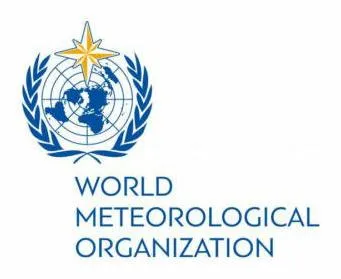
WMO Signals La Niña’s Return, Agriculture Faces Mixed Weather Outlook
The Pacific Ocean is cooling again, and that has the world’s farmers, traders, and policymakers watching forecasts with unease. The World Meteorological Organization said this week there is a 55 percent chance that La Niña conditions will develop between September and November, a shift that could redraw weather maps and strain agricultural systems from Kansas wheat fields to Kenyan maize plots.
La Niña occurs when sea surface temperatures in the central and eastern Pacific fall below normal, altering the position of jet streams and the strength of trade winds. Those changes, though subtle in oceanic terms, carry global consequences. Southeast Asia often turns wetter, while East Africa and the southern United States tend to dry out. In South America, Brazil can see bumper soybean harvests under La Niña rains, while Argentina struggles with drought. Few climate patterns have such a wide footprint, and few matter more for food security.
For producers, the WMO’s signal lands at a delicate moment. Global grain and oilseed markets are still digesting price spikes from earlier in the year, when meat and vegetable oils drove the UN’s Food Price Index to a two-year high. A disruptive La Niña could add fresh volatility.
In India, where summer monsoon rains underpin rice and sugar output, a poorly timed shift could cut yields and force additional imports. East African nations that have endured repeated droughts say another weak rainy season could tip communities already dependent on food aid into deeper crisis. Across the southern Plains in the United States, cotton and sorghum growers know from experience that a La Niña year often means parched soils and higher irrigation bills.
Elsewhere, there are potential gains. Midwest corn and soybean producers sometimes benefit from La Niña’s cooler summers and reliable rains. Wheat farmers in eastern Australia tend to welcome the pattern, which replenishes soil moisture and fills reservoirs. In Brazil, strong La Niña years have coincided with record soybean harvests. That uneven geography explains why the same forecast triggers hope in one place and dread in another.
Global commodity exchanges have already begun to react. Traders in Chicago, São Paulo, and Sydney are recalibrating their positions in anticipation of either crop shortfalls or bumper surpluses. Futures contracts for corn and soybeans have shown more volatility in recent sessions as investors weigh whether the WMO’s 55 percent probability will climb in the months ahead.
History suggests those reactions are justified. The La Niña that persisted from 2020 through 2022 cut Argentina’s soybean crop sharply, while giving Brazil back-to-back strong harvests. In East Africa, the same period produced four consecutive failed rainy seasons, a disaster that pushed millions into food insecurity. Those precedents are never identical, but they inform how governments and markets position themselves when a fresh warning arrives.
Officials at the WMO have stressed that early awareness is not simply an academic exercise. Seasonal forecasts give governments the chance to adjust water allocations, encourage farmers to plant hardier seed varieties, or build up emergency reserves before shortages develop. Celeste Saulo, the organization’s secretary-general, said preparedness translates into economic savings measured in the billions and, more importantly, human lives preserved.
National agencies are already reviewing contingency plans. U.S. extension services are advising producers in drought-prone regions to prepare for tighter irrigation windows. India’s agriculture ministry has been monitoring reservoir levels closely to determine if rice planting schedules need adjustment. In Australia, state governments are working with grain boards to manage stockpiles in anticipation of stronger exports.
Even as La Niña typically brings cooler global averages than its El Niño counterpart, the WMO cautions that climate change is shifting the baseline. Record heat across land and oceans in recent years has added energy to the atmosphere, making floods more destructive and droughts more intense. That means La Niña no longer plays out the way it did decades ago.
For agriculture, this layered effect is crucial. A farmer in southern Brazil may benefit from steady rains, while a counterpart in northern Brazil faces flooding that wipes out crops. In Southeast Asia, a stronger monsoon can recharge aquifers but also damage rice paddies with excess water. Understanding those nuances is why both governments and multinational grain companies pore over every update in the ENSO outlook.
For now, the probability remains just above even odds. Meteorologists will watch sea surface temperatures in the Pacific through September and October for confirmation. By then, planting decisions will already be locked in for many producers, and markets will be committed to one trajectory or another.
The uncertainty itself carries costs. Farmers in Kenya weighing whether to buy drought-tolerant seed, or traders in Chicago debating soybean futures, must make decisions before forecasts crystallize. That tension is part of why ENSO cycles remain among the most consequential, and most closely monitored, drivers of global agriculture.
Whether La Niña arrives on schedule or fades into a neutral season, the warning has already done its work. It has reminded governments and markets that climate cycles remain powerful enough to shape trade flows, food prices, and livelihoods around the world. And it has underscored the fact that in a warming climate, even a cooling phase like La Niña can carry more risk than relief.